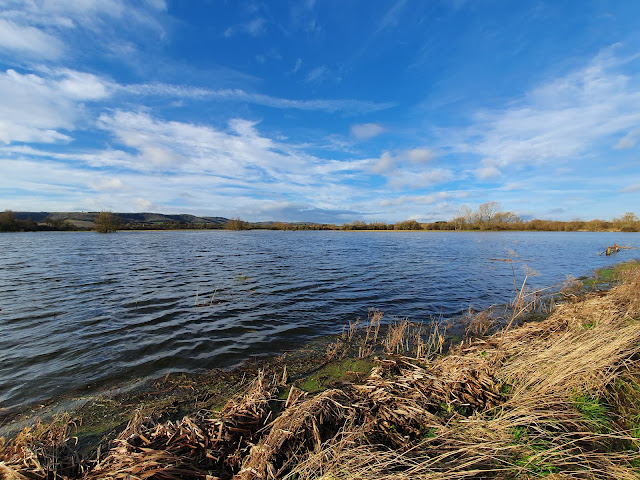Amberley Wildbrooks during a wet December
A great amount of rain had transformed the landscape around
Sussex. With so many flooded areas it was a fantastic time to be a duck. The
promise of a great number of ducks and the chance of birds of prey lured my
partner and myself to Amberley Wildbrooks. Walking from the path at Amberley it
was immediately obvious that the brooks were now in fact a lake.
The majority of the path was under 30-45 cm of water. Wading
through we found a small patch of dry land to stand around. A large flock of
Canada geese were producing a soundscape befitting of this watery land. The
number of wigeons was glorious; easily 1,500 were visible from our small
island. Also seen were pintails and shovelers, both in healthy quantities but
lost among the swathes of wigeon.
Spiders littered the surface of the water having been lifted
from their terrestrial homes. Their feet resting on the surface tension of the
water, it seemed more of an inconvenience rather than a dreadful situation for
them. There were small tufts of grass poking out of the water. These tufts were
emitting squeaking sounds; all the small mammals must have been displaced and
were now stranded in small pockets.
Devastation for some had provided opportunity for others as avian
predators of small mammals were congregated and hunting over any remaining bit
of ground. The most numerous of these were red kites, at one point I had six in
a single scope view! Buzzards were dotted around and a couple of kestrels seen.
Two marsh harriers were hunting in the distance, one of these being a beautiful
adult male and the other appeared to be an adult female. A more slender harrier
with a white rump was a hen harrier, always great to see!
After about an hour and a half of standing in water we
decided to head off and on our wade back a kingfisher flew past us and perched
in a distant bush. With the rivers and lakes having burst their banks fishing
must have been difficult.
On the journey back home we stopped at Fairmile Bottom and
walked up the hill there. Most of the wood appeared quiet but on the return leg
an astonishingly bright firecrest gave a great show. This bird was so brightly
coloured it appeared as though it had some CGI work done on it. The firecrest
was in a favourite location of understorey holly. A marsh tit in the same bush
was accompanying the crest, the pair seemed friendly and foraged around
together.
- Hugh Baggaley





Comments
Post a Comment